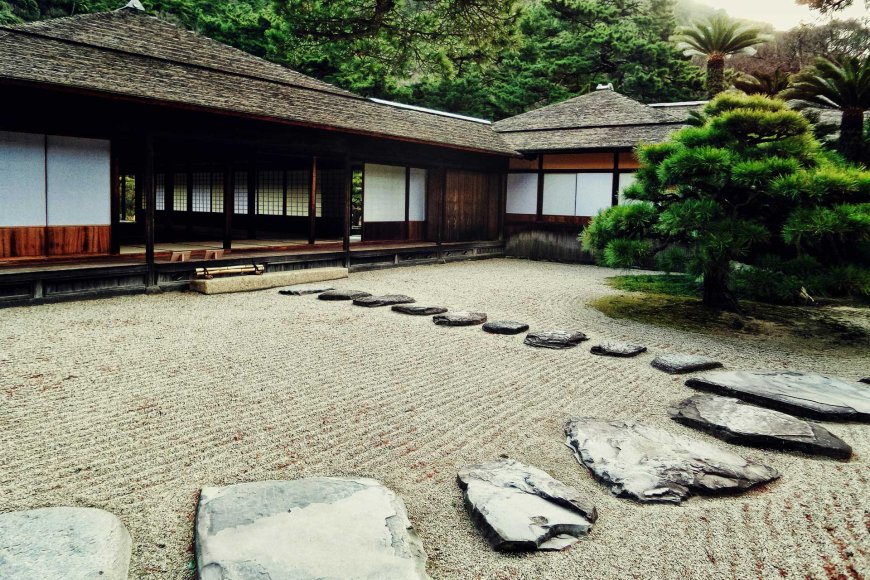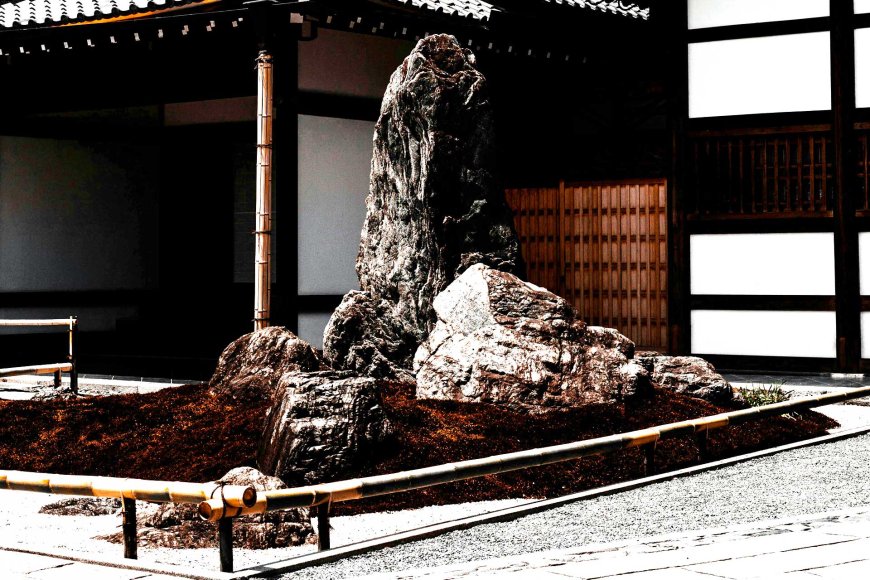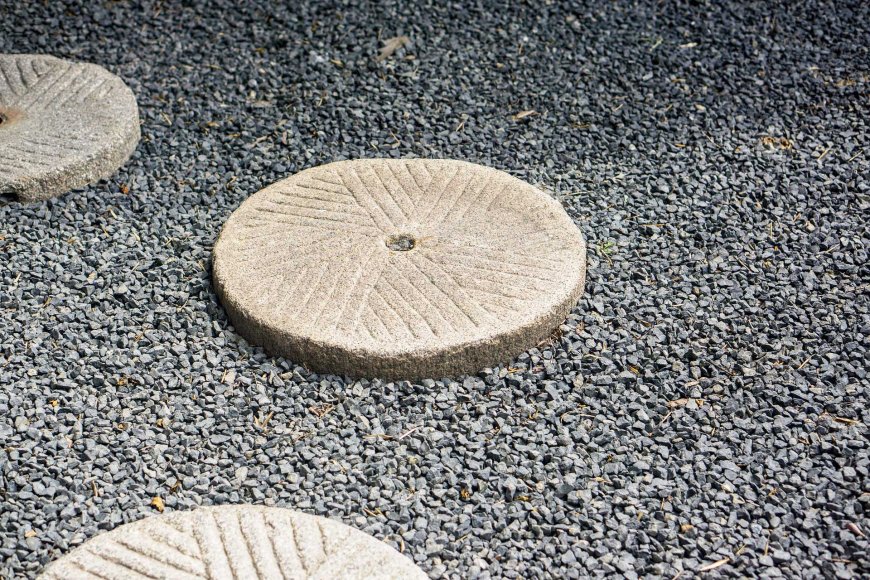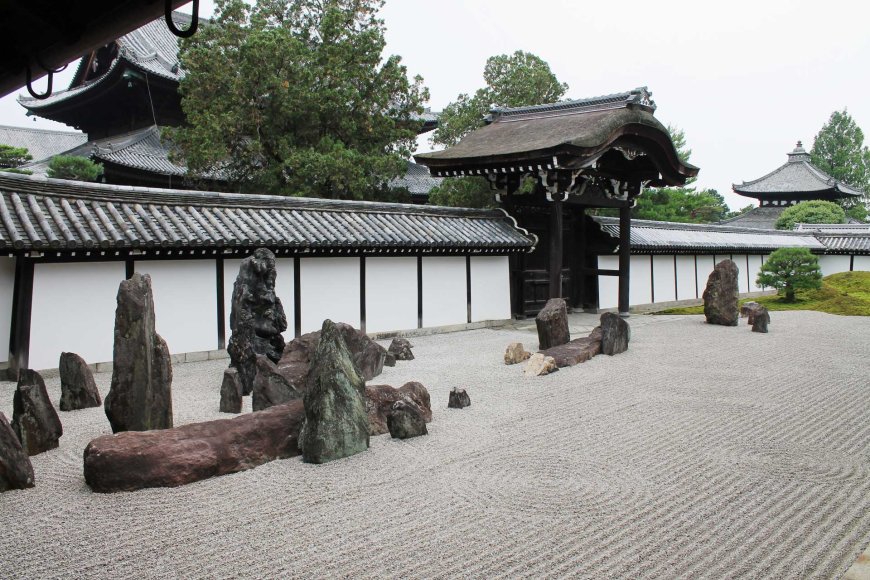Japanese Zen Gardens: The Art of Peace and Tranquility
Japanese Zen gardens, or karesansui, are minimalist landscapes designed to promote deep reflection and meditation through the use of rocks, gravel, and carefully chosen plants. Rooted in Zen Buddhism, these gardens have become a global symbol of peace, simplicity, and spiritual balance.

The Philosophy Behind Zen Gardens
Zen gardens are deeply rooted in Zen Buddhism, a school of thought that emphasizes zazen or seated meditation as the path to enlightenment. More than just a form of landscaping, a Zen garden is a physical embodiment of mindfulness—a quiet space that draws the observer inward.
The garden’s minimalist design intentionally eliminates visual clutter. Each stone, rake line, and patch of moss is chosen and placed with the specific purpose of creating awareness of the present moment. This simplicity encourages visitors to slow down, breathe deeply, and let go of mental distractions.
Symbolism plays a crucial role. Rocks often represent mountains or islands, and gravel can symbolize water, time, or spiritual flow. These natural metaphors invite reflection on the impermanence of life and the profound connection between humans and nature.
The absence of bright colors or elaborate ornamentation isn’t a lack—it’s a deliberate choice. The muted tones and sparse layout act as a mirror for the soul, guiding one toward clarity and serenity.

Core Elements of a Zen Garden
A Zen garden’s tranquil beauty lies in its essential elements—each one deeply symbolic and precisely arranged to evoke a sense of balance and reflection.
Rocks: The Backbone of the Landscape
In a Zen garden, rocks symbolize strength, endurance, and the eternal presence of nature. Their arrangement is no accident; every boulder and pebble is placed with care to establish visual harmony and convey natural scenes like rugged coastlines or remote mountains.
These rocks serve as anchors in the composition, grounding the visitor emotionally and spiritually. Often, a single large rock will act as the focal point, with smaller stones arranged in supporting roles to balance the composition—much like life, where each element supports a greater whole.

Gravel and Sand: Flowing Stillness
Perhaps the most recognizable feature of a Zen garden is its raked gravel or sand. These elements represent water or the imperceptible flow of time. The act of raking the gravel into wave-like or circular patterns is itself a meditative process.
Maintaining the gravel design can be a daily ritual, reminding us that serenity is not a fixed state but one that must be cultivated through intentional action. The repetitive motion of raking encourages focus, patience, and self-awareness.

Plants: Subtle Touches of Life
While not always present, plants in Zen gardens are used sparingly to maintain the garden’s clean lines and calm ambiance. Moss is the most common, thriving in shady areas and adding a lush texture to stone surfaces.
Other plants, like dwarf pines or bamboo, may appear along the edges, offering a soft contrast to the rigid structure of rocks and sand. The goal is not to impress with color or bloom, but to celebrate the beauty of restraint and natural form.

Zen Gardens Around the World: A Global Influence
Though rooted in Japanese tradition, Zen gardens have transcended borders. From corporate campuses to urban parks and private backyards, their principles have influenced modern landscaping across the globe.
In the United States, Zen-inspired gardens appear in public spaces, therapy centers, and even schools—places where mindfulness and mental clarity are increasingly valued. In cities like Portland, Oregon and San Francisco, large-scale Japanese gardens draw thousands of visitors each year.
In Europe, Zen gardens blend with local traditions to create cross-cultural spaces of meditation, often appearing in modern architectural settings. Their design principles are also echoed in interior spaces, where clean lines, neutral palettes, and natural materials foster a Zen-like atmosphere.
The popularity of Zen gardens continues to grow in today’s wellness-focused world. They’re often included in yoga retreats, spa resorts, and mental health centers, where they provide a quiet refuge from digital overload and everyday stress.

Finding Peace Through Simplicity
Japanese Zen gardens are not simply decorative landscapes—they are sacred spaces of silence, reflection, and inner balance. With their symbolic use of rocks, gravel, and plants, these gardens invite us to pause, be present, and appreciate the elegance of simplicity.
In a world filled with noise and distraction, the Zen garden stands as a timeless reminder: peace is not something we find outside—it is something we cultivate within. As the influence of Zen gardening continues to spread globally, so too does its quiet wisdom, helping people everywhere reconnect with nature, themselves, and the moment.
Nipino.com is committed to providing you with accurate and genuine content. Let us know your opinion by clicking HERE.




































































